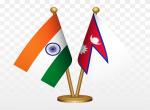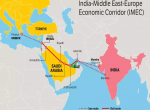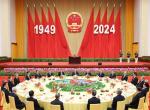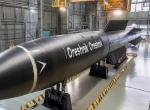In end February this year, Chinese President Xi Jinping formed a new working group at the apex level on cyber security and information security. While this was seen as the political leadership’s renewed efforts in underlining the threats and challenges to the national security in this arena, the military leadership has been paying particular attention to information warfare (IW) challenges since early 1990s. According to People’s Liberation Army (PLA) concepts, the term information warfare encompasses cyber warfare, electronic warfare, deception warfare, psychological warfare, computer warfare, and transcends beyond the military realm.
The PLA has been adapting Western concepts to suit local conditions and considers it as a ‘driving force in PLA’s military combat readinesses. PLA has used the construct of People’s War and devised its own precepts of ‘Peoples War in IW domain’ where millions of Chinese, both civilians and soldiers armed with computers, could achieve the objectives of IW. That is what has been precisely happening since over the last one decade wherein a number of cyber/information attacks are known to have originated from China with India being one among many other countries being at the receiving end. In last few years, Indian government’s computers including those of National Security Council and some other important offices have been hacked with all evidence pointing towards China. PLA’s information warriors and hacker groups have been actively involved in virus warfare and hacking activities in countries of their interest.
PLA has intensified its efforts in IW field since it officially pronounced its military doctrine of ‘Local War under the conditions of informationalisation’ in its 2004 White Paper on Defence. The objective laid down was to build an informationalised force and to win an information war and push forward the revolution in military affairs with Chinese characteristics with ‘informationalisation’ at its core. Since the articulation of its current military doctrine, PLA has laid solid foundations for fighting information and cyber wars. According to PLA’s precepts, before any physical operations take place it would be the information and cyber domains that would be used to cripple the adversary’s capabilities.
PLA’s expanding capabilities in the use of space for military purposes provides it with the means to enhance its command and control, intelligence, surveillance, reconnaissance, information and cyber warfare capabilities. Space is considered as a commanding height for enabling the battlefield information operations. PLA’s strategists have also stressed on the imperatives and necessity of ‘destroying, damaging and interfering’ with an enemy’s reconnaissance and communications satellite systems. No country other than China has plans of launching almost 100 satellites till 2015. Compared to China, India’s plans for launching satellites are very modest; in fact in the last 37 years, India has launched 100 missions. Such endeavours when fully realized would add to China’s counter-space and IW capabilities.
PLA has also vastly expanded its optical fiber and other terrestrial networks giving it a tremendous IW capability. At the national level, China has a C3I system based on fiber optic cables, satellite communications, micro-wave links and automated command and control systems. The PLA has both secured and non-secured telecommunications and has an army wide data communication network and integrated field operations communication system which has been strengthened in the last decade. Many joint exercises carried out by PLA show that its WAN capabilities within Chinese borders have improved. PLA has been carrying out military exercises in Lanzhou and Chengdu Military Regions (which include the entire Sino-Indian border) where the PLA has practiced joint and integrated operations that include ‘information operations’.
According to Pentagon’s Annual Report to Congress on China’s Military and Security Developments of 2013, PLA’s Information Operations (IO) have matured and the top priority in peacetime is given to Computer Network Defence. As mentioned above, not only the IO/IW should be used even before the start of the campaign it would continue in all phases of war. Pre-emption also rhymes well with PLA’s doctrine of active defence where counter attack can be used to gain advantage even before the commencement of hostilities. Chinese military theorists also believe that if an information campaign is won then the need for military operations may not be necessary. Such a contingency may arise possibly with nations (like the U.S.) which are information dependent.
But that is no solace for India as both military and civil arena in our country is increasingly becoming dependent on information and information networks and systems. Our critical infrastructure dependent on a wide variety of information systems remains vulnerable to information attacks. Stuxnet attack on Iranian nuclear facility did make India reflect on its vulnerabilities in the field of critical infrastructure. It has also been reported that even though the target of Stuxnet was Iran, Kaspersky Lab experts’ data indicates that in fact it was India that was the epicenter of Stuxnet activity thus raising questions about its implications and motives of the originator. Some analysts aver that the largest power outage in Indian history (of July 2012) which affected more than half of India was caused by the malicious ware of Stuxnet.
One also needs to take note of the theories and concepts articulated by two senior colonels of PLA in their book ‘Unrestricted Warfare’ where they opine that there would be no boundaries between military and non-military areas of warfare in future.
The levels of integration between the civilian and military efforts of PRC in all the fields of information and cyber warfare have been on the rise. The top political and military leadership of China is thoroughly seized with the significance of acquiring information and cyber warfare capabilities. The concept of Computer Network Operations (CNO) and Integrated Network Electronic Warfare is germane to their doctrine of IW. PLA’s Third and Fourth Departments of General Staff have been made responsible for executing CNO. While the Third Department has been tasked to collect intelligence and carry out defensive operations, the Fourth Department has the responsibility for network attacks and other offensive IW operations.
China’s defence budget (as also the internal security budget) has witnessed a double digit growth (in percentage terms) every year for over a decade. According to one study, the Chinese government actively funds IW related research in commercial IT companies and civil and military universities. The number of universities conducting such research is put around 50 which indicates the importance and priority given to security related aspects of information technologies. Further, China’s commercial IT companies involved in R & D actively seek collaboration with foreign firms to obtain cutting edge technologies which have dual use and therefore, in the end, benefit the PLA also. In certain cases, the civil use is only nominal and routing the research and development through the civil entities is undertaken as a matter of expediency. Such a subterfuge also helps in lowering the costs for the PLA. As is well known, China’s official defence budget is said to be much less than the actual one.
In fact, in January this year, Chinese telecom equipment companies Huwaei was accused of hacking into Bharat Sanchar Nigam Limited (BSNL)’s network and sabotaging its expansion plans in Rajahmundry in coastal Andhra Pradesh. A five-member team comprising senior officials from the National Security Council Secretariat, Intelligence Bureau, Ministry of Home Affairs and BSNL was formed to investigate the issue. Even a US Congressional report highlights the security threat posed by the Chinese companies like Huwaei and ZTE.
In conclusion, security threats and challenges to India in information warfare domain that includes cyberspace cannot be overemphasized. The Indian armed forces have promulgated a joint Information warfare doctrine and a tri-service Cyber Command is in the process of being established. Some efforts by the government have also been made in the shape of establishing a Computer Emergency Response Team and formulation of a National Cyber Security Policy-2013. However, what is needed of integrating the efforts of a number of ministries and stakeholders in this field. Allotment of additional funds for R & D and supporting such activities in educational institutions and universities is an imperative. Creating of space assets that support the information and cyber warfare efforts is also an imperative.
Information deterrence is equally important as a conventional military deterrence or even nuclear deterrence (which in turn is dependent upon a robust information capability). If critical infrastructure of a nation like banking, power industry, and railway or air communication networks are crippled, then there may be no need for a war. The nation would stand defeated as depicted by the Chinese military writers
Published Date: 21st April 2014, Image source: http://img.over-blog-kiwi.com










Post new comment